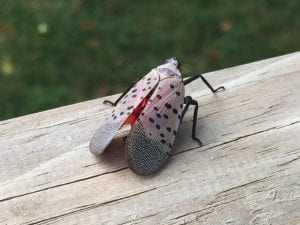Watch out for Spotted Lanternflies in your yard! Spotted Lanternfly (SLF) is an invasive and destructive insect that has been found in Connecticut over the past three years. It was reported in West Haven and Greenwich. The insect has the potential to severely impact Connecticut’s farm crops, particularly apples, grapes, and hops, as well as a number of tree species such as maple. In Connecticut, approximately 47% of the forest trees are considered as potentially susceptible to Spotted Lanternflies.
Common Q&As:
Q: What should I do if I find one in my yard?
A: First, do not attempt to move any wood or other potentially infested material from the site. Instead, you should follow the instructions on the SLF sample submission form and send a dead specimen sample to The Connecticut Agricultural Experiment Station or take pictures and report it online. For more information: https://portal.ct.gov/DEEP/Forestry/Forest-Protection/Spotted-Lanternfly#What1
Q: Do spotted lanternflies impact human health?
A: According to the New Jersey Department of Agriculture, it is no threat to humans or animals, only plants.
Q: How do spotted lanternflies destroy my trees?
A: Both nymphs and adults of the SLF feed by sucking sap from the stems and leaves of host plants, this can weaken and damage the plant.
Content Reviewed by Mary Concklin, UConn Extension Educator Emeritus; and curated by Ben Xu, UConn.
